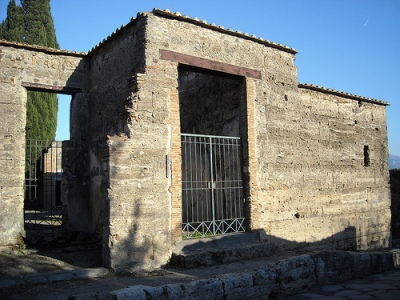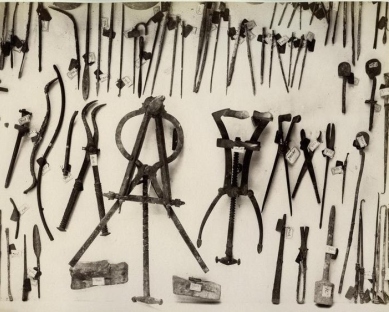

/Reg%20VI,%20Ins%201.jpg)
/House%20of%20the%20Surgeon%20-%20plan.jpg)
The House
of the Surgeon was named in honor of the owner of the
house, who judging by archaeological finds was a surgeon. The
House of the Surgeon is one of the most ancient buildings in Pompeii. It
was built in the 4th-3th centuries BC. The facade of the Surgeon’s
house is made of limestone blocks, and the interior walls are made
in opus africanum technique. In this architectural style, vertical
and horizontal blocks were laid one on another, and between them lay
a wall of small stones and bricks.
Among personal items,
scientists have found a complete set of surgical instruments. This
suggested that at the time of the eruption a surgeon lived here. The
collection of instruments is surprisingly similar to the instruments
that surgeons use so far. Most have not changed in the past two
thousand years. Roman surgical instruments included tweezers,
scalpels, catheters, and even extractors for arrowheads.
The
fresco on the bottom left is from the House of Siricus (Regio VII,
Insula 1, 25, 47). On it, the surgeon pulls the end of the arrow
from the leg of the ancient Greek hero Aeneas.

In the 2nd century BC, a hole was made over the atrium in order to better illuminate the room. Apparently Roman architecture became fashionable in this region long before the advent of the armies of Sulla. The rest of the house is a traditional Italian estate of that period.
Sometime in the 1st century AD, the house was decorated with frescoes in the fourth style, but today there is little left of the old beauty. The best picture depicting Germ Dionysus, found here today is kept in the Archaeological Museum in Naples. Most of the walls were covered with panels of red and yellow with a red curb at the bottom.